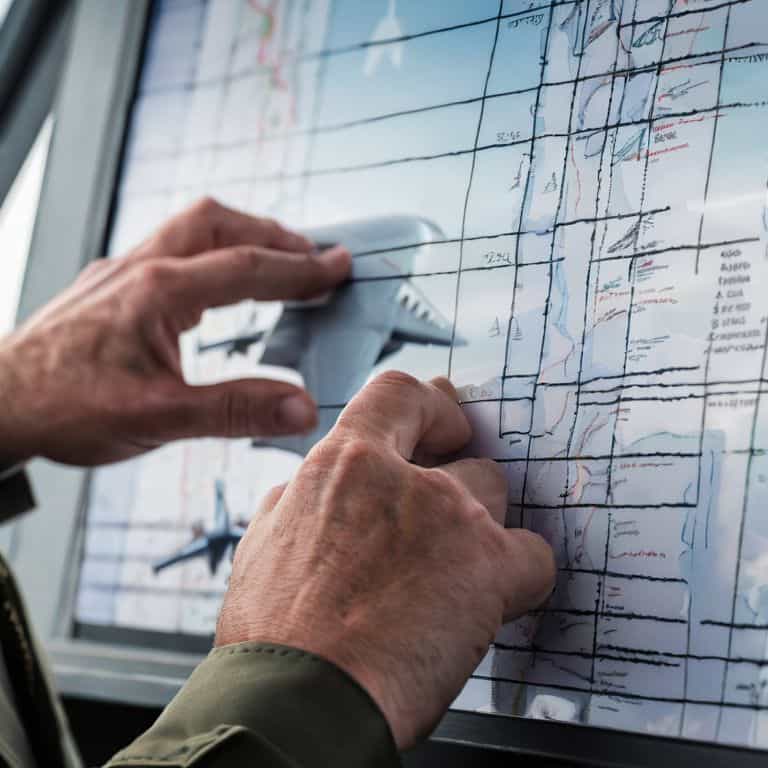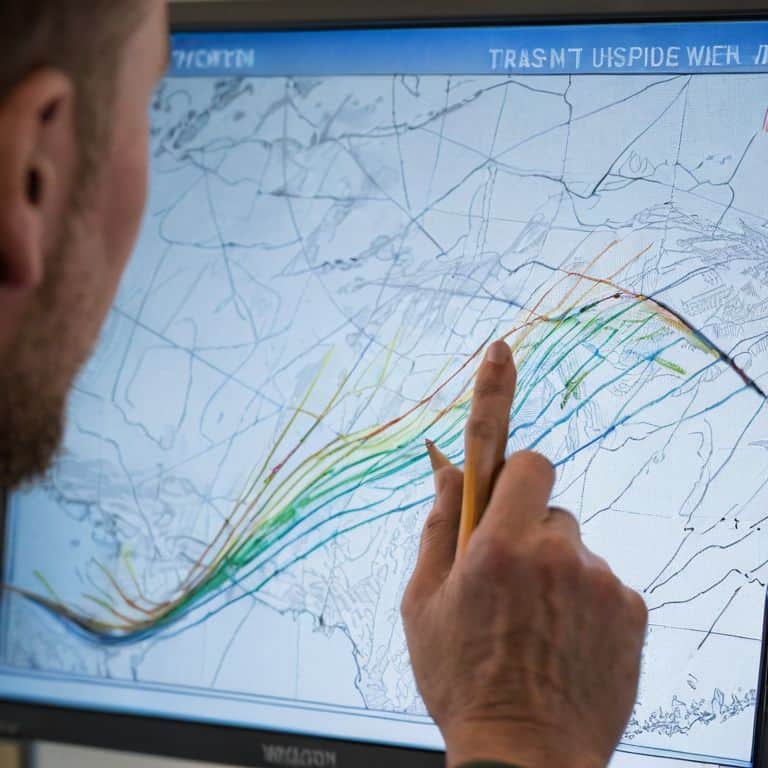I still remember my early days as a bush pilot in Alaska, where understanding how to read a winds aloft chart was a matter of safety and efficiency. I’ve seen many pilots struggle with deciphering these charts, and it’s often due to a common misconception: that winds aloft charts are overly complex and only accessible to experienced pilots. However, I’ve found that with a clear, step-by-step approach, anyone can learn to read these charts and make informed decisions about their flight plans.
In this article, I’ll share my personal approach to how to read a winds aloft chart, focusing on the fundamentals that have helped my students and me navigate even the most challenging flights. You’ll learn how to identify key elements, such as wind direction and speed, and how to apply this information to your flight planning. By the end of this guide, you’ll be equipped with the knowledge and confidence to take control of your flight plans and make the most of your time in the air. Whether you’re a seasoned pilot or just starting out, my goal is to provide you with practical advice that you can apply immediately, so you can focus on what matters most – safe and enjoyable flying.
Table of Contents
- Guide Overview: What You'll Need
- Step-by-Step Instructions
- Mastering Winds Aloft Charts
- Navigating Skies with Ease: 5 Essential Tips for Reading Winds Aloft Charts
- Key Takeaways for Mastering Winds Aloft Charts
- Unlocking the Skies
- Conclusion: Mastering the Skies with Winds Aloft Charts
- Frequently Asked Questions
Guide Overview: What You'll Need

Total Time: 1 hour 15 minutes
Estimated Cost: $0 – $0
Difficulty Level: Intermediate
Tools Required
- Pencil (for marking chart)
- Eraser (for correcting mistakes)
- Ruler (for measuring distances)
- Protractor (for calculating angles)
Supplies & Materials
- Winds Aloft Chart current and valid for your location
- Meteorological Handbook (for reference)
- Calculator (for performing calculations)
- Paper (for taking notes)
Step-by-Step Instructions
- 1. First, let’s start by understanding what a winds aloft chart is and why it’s crucial for pilots to know how to read them. A winds aloft chart is a tool used to predict wind direction and speed at different altitudes, which is essential for safe and efficient flight planning. To begin reading a winds aloft chart, you’ll need to familiarize yourself with the chart’s layout and the information it provides.
- 2. Next, take a look at the chart’s header, which typically includes the issue time and valid time of the forecast, as well as the forecast period. This information is vital in determining the chart’s relevance to your flight plan. Make sure to note the times and dates to ensure you’re working with the most current forecast.
- 3. Now, let’s move on to the chart itself. You’ll notice a series of lines and symbols that represent different wind speeds and directions. The wind barbs are a key component of the chart, as they indicate the wind direction and speed. To read the wind barbs, look for the flag on the barb, which points towards the direction the wind is coming from.
- 4. To determine the wind speed, count the number of short lines or long lines on the wind barb. Each short line represents a certain speed, usually 5 knots, while each long line represents a higher speed, usually 10 knots. By combining these lines, you can calculate the wind speed at a given altitude.
- 5. Next, let’s talk about isotachs, which are lines that connect points of equal wind speed. Isotachs help you visualize the wind patterns and identify areas of high or low wind speeds. By analyzing the isotachs, you can anticipate potential turbulence or areas of smooth air.
- 6. Another important aspect of reading a winds aloft chart is understanding the altitude layers. The chart typically displays wind information at different altitude levels, such as 3,000, 6,000, or 9,000 feet. Make sure to note the altitude layer you’re looking at and how it relates to your planned flight route.
- 7. Finally, it’s essential to combine the information from the winds aloft chart with other weather forecasts and tools, such as surface analysis charts and weather radar. By integrating this data, you can gain a more comprehensive understanding of the weather conditions and make informed decisions about your flight plan. Remember to always cross-check your findings with other reliable sources to ensure accuracy.
Mastering Winds Aloft Charts

As we delve deeper into the world of winds aloft charts, it’s essential to understand the importance of winds aloft in meteorology. Winds aloft charts provide critical information for pilots, helping them navigate through different layers of the atmosphere. By decoding wind direction and speed, pilots can make informed decisions about their flight plan, taking into account potential wind shear and turbulence.
When using winds aloft charts for flight planning, it’s crucial to consider the wind barbs on the chart. These barbs indicate the direction and speed of the wind at different altitudes, allowing pilots to anticipate and prepare for any changes in wind conditions. By interpreting wind barbs on charts, pilots can gain a better understanding of the wind patterns and make necessary adjustments to their flight plan.
To further enhance your understanding of winds aloft charts, I recommend practicing with sample charts. This will help you become more comfortable with decoding wind direction and speed, as well as identifying potential areas of wind shear. By mastering winds aloft charts, you’ll be better equipped to make informed decisions about your flight plan, ensuring a safer and more efficient journey.
Decoding Wind Direction and Speed
To decode wind direction and speed, let’s break it down into manageable parts. Wind direction is indicated by the direction the wind is coming from, not where it’s going. Think of it like navigating through a valley – you need to know where the wind is originating to adjust your flight path accordingly. The speed, on the other hand, is represented by the number attached to the wind direction.
As you practice reading winds aloft charts, remember that wind speed is typically shown in knots. A simple trick to help you remember is to associate higher numbers with stronger headwinds, which would require adjustments to your flight plan. By mastering this step, you’ll be better equipped to make informed decisions during your flights, ensuring a safer and more enjoyable experience.
Interpreting Wind Barbs for Pilots
When examining winds aloft charts, wind barbs are essential for understanding wind patterns. A wind barb is a symbol that indicates both wind direction and speed. The direction the barb points indicates the direction the wind is coming from, while the number of “feathers” or “flags” on the barb represents the wind speed. As a pilot, being able to interpret these barbs quickly and accurately is crucial for navigating through different altitudes and conditions.
By recognizing the shape and details of wind barbs, you can anticipate how winds will affect your flight. For instance, a barb with a flag indicates a higher wind speed, which could impact your aircraft’s performance and route. Practicing the interpretation of wind barbs will become second nature, much like checking your instruments during a pre-flight briefing. With time and practice, you’ll be able to glance at a winds aloft chart and instantly understand the wind conditions, making you a more informed and safe pilot.
Navigating Skies with Ease: 5 Essential Tips for Reading Winds Aloft Charts

- Start by understanding the basic layout of a winds aloft chart, recognizing that it’s a vertical profile of wind conditions at various altitudes
- Learn to decode wind direction and speed, remembering that wind direction is indicated by the direction the wind barb points, while speed is shown by the number of flags or pennants on the barb
- Familiarize yourself with the concept of wind shear, which is a change in wind direction and/or speed with height, and how it’s represented on the chart
- Practice interpreting wind barbs for pilots, knowing that a short barb represents 5 knots, a long barb 10 knots, and a pennant 50 knots, to accurately assess wind conditions at different altitudes
- Always cross-reference winds aloft charts with other weather forecasting tools and models, such as METARs and TAFs, to get a comprehensive view of the weather conditions for your flight planning
Key Takeaways for Mastering Winds Aloft Charts
Understand that winds aloft charts provide crucial information about wind direction and speed at various altitudes, which is essential for safe and efficient flight planning
Learn to decode wind direction and speed by interpreting wind barbs, which are graphical representations of wind patterns, to make informed decisions about flight routes and altitudes
Practice applying your knowledge of winds aloft charts to real-world flight scenarios, considering factors such as turbulence, air traffic control, and weather conditions to become a proficient and confident pilot
Unlocking the Skies
Reading a winds aloft chart is not just about deciphering lines and numbers, it’s about understanding the invisible forces that shape our flight, and with practice, you’ll learn to navigate these winds like a seasoned pilot charts a familiar course.
Daniel Sato
Conclusion: Mastering the Skies with Winds Aloft Charts
As we conclude our journey through the world of winds aloft charts, let’s summarize the key points we’ve covered. From understanding the basics of wind direction and speed to decoding wind barbs, we’ve broken down the complex into manageable chunks. By following these steps and practicing your skills, you’ll become proficient in reading winds aloft charts, giving you a significant edge in navigating the skies. Remember, mastering winds aloft charts is all about attention to detail and a systematic approach to interpretation.
Now that you’ve taken the first steps towards unlocking the secrets of winds aloft charts, I encourage you to keep pushing forward, to continue learning and to apply your knowledge in real-world scenarios. Whether you’re a seasoned pilot or just starting out, the ability to read and understand winds aloft charts will elevate your flying experience and enhance your safety in the skies. As you soar to new heights, remember that the principles of flight are not just about technical skills, but also about developing a deeper understanding of the world around you. Keep flying, keep learning, and always remember to stay curious.
Frequently Asked Questions
How do I apply the information from a winds aloft chart to plan a safe and efficient flight route?
To apply winds aloft chart info, I use a simple flight planning checklist: plot your route, identify key altitudes, and overlay wind directions and speeds. Then, adjust your route to maximize tailwinds and minimize headwinds, ensuring a safe and efficient flight.
What are some common mistakes to avoid when interpreting wind barbs on a winds aloft chart?
When interpreting wind barbs, I’ve seen students mistakenly read the barb as indicating wind direction from the tail, rather than towards it. Another common error is misjudging the wind speed, forgetting that each full barb represents a specific knot value. Let’s review the basics to avoid these pitfalls.
Can winds aloft charts be used in conjunction with other weather tools to get a more complete picture of flying conditions?
Absolutely, winds aloft charts are just one piece of the puzzle. I like to think of them as a key component of a pre-flight briefing, used in tandem with other tools like METARs, TAFs, and satellite imagery to get a comprehensive view of the weather landscape, much like how I use multiple maps to navigate a backcountry hike.



